Art World
5 Things We Learned About Yayoi Kusama From the New Documentary About Her Extraordinary Life
The new documentary illuminates Kusama's creative genius and great ambition, as well as her struggles, over the years.
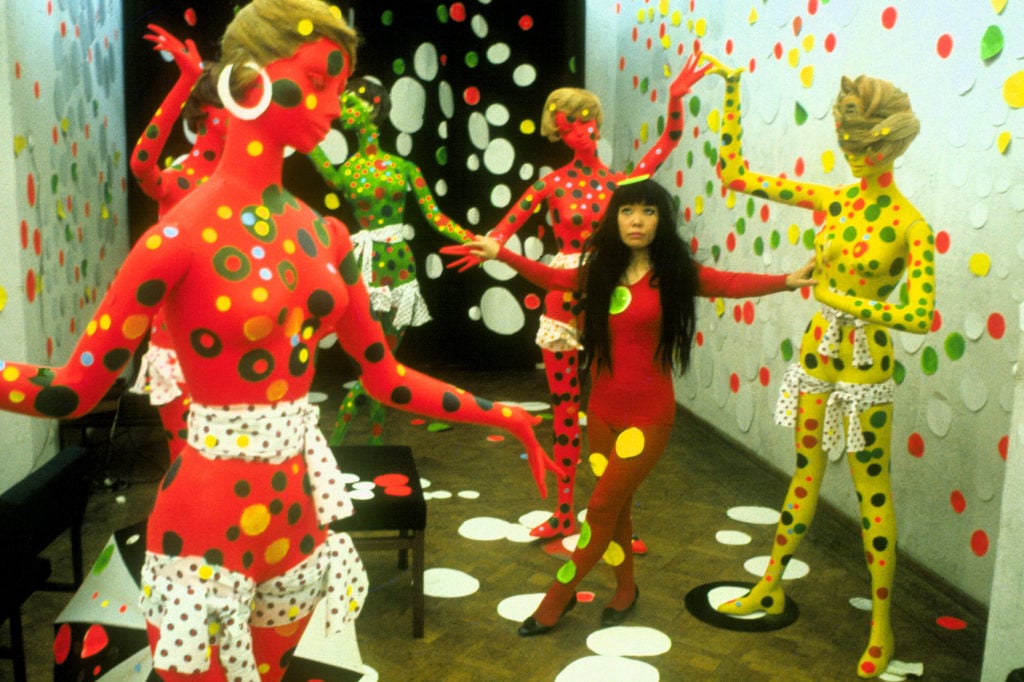
The new documentary illuminates Kusama's creative genius and great ambition, as well as her struggles, over the years.

Sarah Cascone

Today, Yayoi Kusama is an art-world superstar, with museum-goers around the world lining up for hours for the chance to take photographs of—and with—her mirrored Infinity Rooms and polka-dotted pumpkins. And yet, the Japanese artist has lived in a mental hospital since the 1970s, suggesting an unseen dark side to her colorful universe. As a new documentary reveals, the road to success was a long and winding one that tested the artist’s drive, resiliency, and, ultimately, her sanity.
Kusama – Infinity, directed by Heather Lenz, takes an unvarnished look at the artist’s mental health struggles, from her chilling spoken word piece Manhattan Suicide Addict Poem from 1973 to Kusama’s point-blank remembrances about throwing herself out the window of her New York City apartment. (Thankfully, the documentary ends on a positive note: “Now that my life is in its last stage, I am putting all of my energy into my art,” said Kusama. “I want to live forever.”)
The film also highlights Kusama’s pioneering innovation—leaving behind the established world of bronze nude sculptures to present the mirrored orbs of Narcissus Garden at the 1966 Venice Biennale or to paint naked bodies in Central Park, and transforming the notion of art with her now-world famous Infinity Mirror Rooms. Endlessly creative, she would stop at nothing to promote her work, despite the odds stacked against her as an Asian woman in a male-dominated field.
Here are five things you might not know about Kusama, as revealed in the new Magnolia Pictures film, which opens Friday, September 7, at New York’s Film Forum and Los Angeles’s Landmark Nuart.
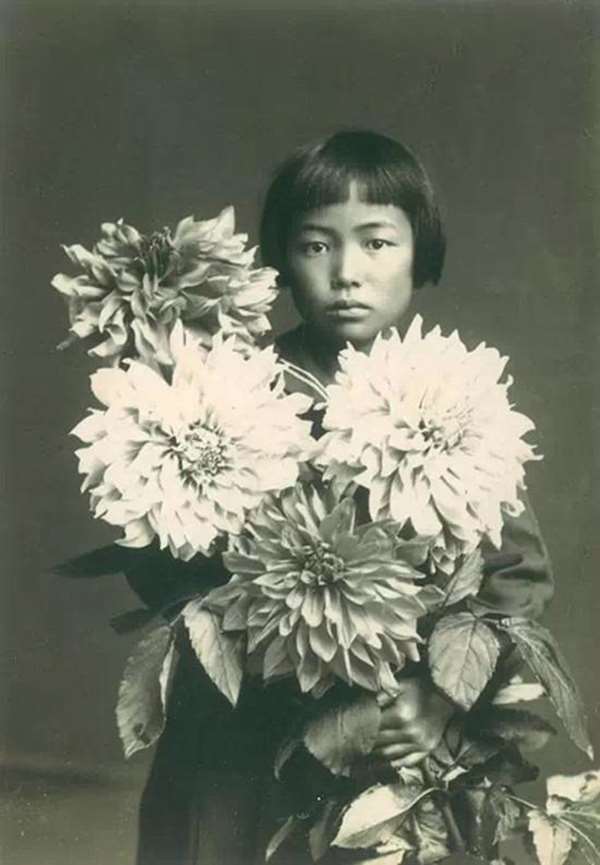
Yayoi Kusama (1939). Photo courtesy of Ota Fine Arts, Tokyo/©Yayoi Kusama, Yayoi Kusama Studio Inc.
The film claims that Kusama’s obsessive drive to create is driven in part by the need to finish a work of art before her disapproving mother could stop her. To this day, that experience informs her practice. Alexandra Munroe—who curated the 1989 retrospective at New York’s Center for International Contemporary Arts that helped return Kusama to the public eye after nearly two decades in obscurity—says, “She’s working as fast and furiously as she can to finish a work before it is torn away from her.”
Her mental illness, too, may have its roots in traumatic childhood experiences. Her mother tasked Kusama with catching her father cheating with another woman. The artist succeeded and was apparently scarred for life, rejecting sexual relationships as an adult. (The film also divulges her relationship with Joseph Cornell, which worked, according to Kusama, because “he didn’t like sex and I didn’t like sex. So we didn’t have sex!”)
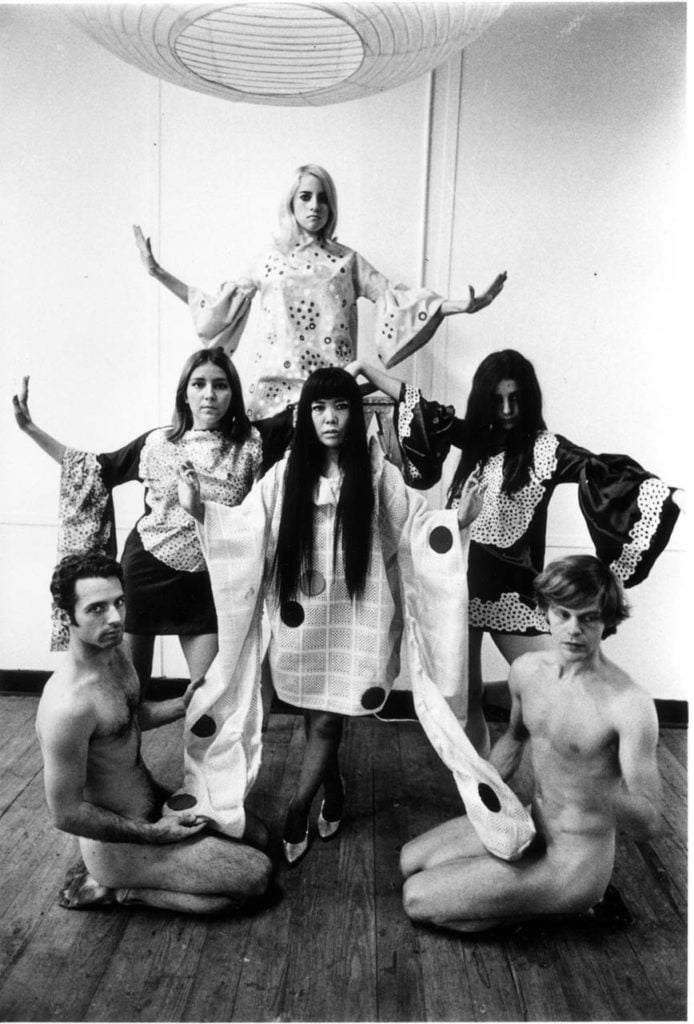
Yayoi Kusama’s New York studio (1968). Photo ©Yayoi Kusama, Yayoi Kusama Studio Inc.
Despite her own feelings toward physical intimacy, Kusama was quite progressive when it came to other people’s sexual proclivities. A savvy self-promoter, Kusama issued press releases about her “Happenings,” performance art pieces that often featured nudity (rendering her something of a pariah in her hometown). One Happening included the country’s first gay marriage, according to a release.
“The purpose of this marriage is to bring out into the open what has hitherto been concealed,” said Kusama in a statement. “Love can now be free, but to make it completely free, it must be liberated from all sexual frustrations imposed by society. Homosexuality is a normal physical and psychological reaction, neither to be extolled or decried.”
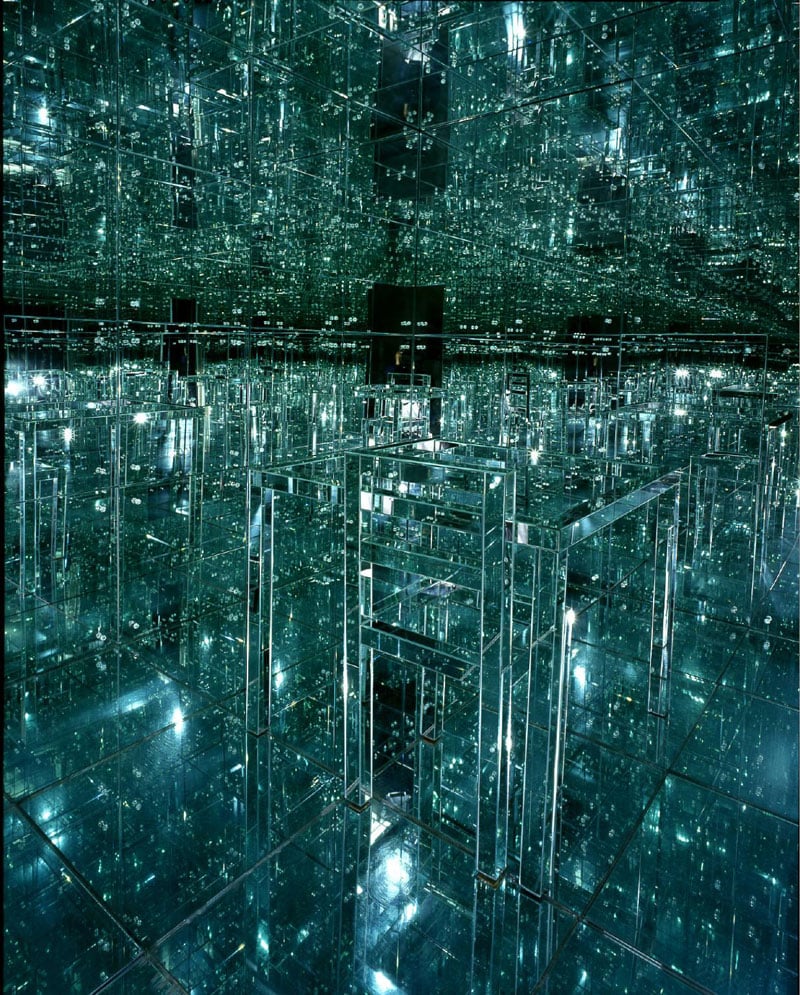
Lucas Samaras, Room No. 2 (popularly known as the Mirrored Room), 1966. Yayoi Kusama had displayed her first Infinity Mirror Room in New York earlier that year. Photo courtesy of Pace Gallery.
What do Andy Warhol, Claes Oldenburg, and Lucas Samaras all have in common? According to the film, they all ripped off Kusama, creating work remarkably similar to hers shortly after she debuted her original pieces.
Oldenburg and Kusama showed alongside the likes of Jackson Pollock, Donald Judd, and Andy Warhol at New York’s Green Gallery in 1963, with Kusama showing one of her phallic couches. Oldenburg offered a hanging papier mache sculpture of a suit. Later that year, he debuted his famous soft sculptures, despite never having shown interest in the traditional women’s work of sewing. At the opening, Kusama claims that Oldenburg’s wife, Patty Mucha, came up to her and said, “I’m sorry, Yayoi.”
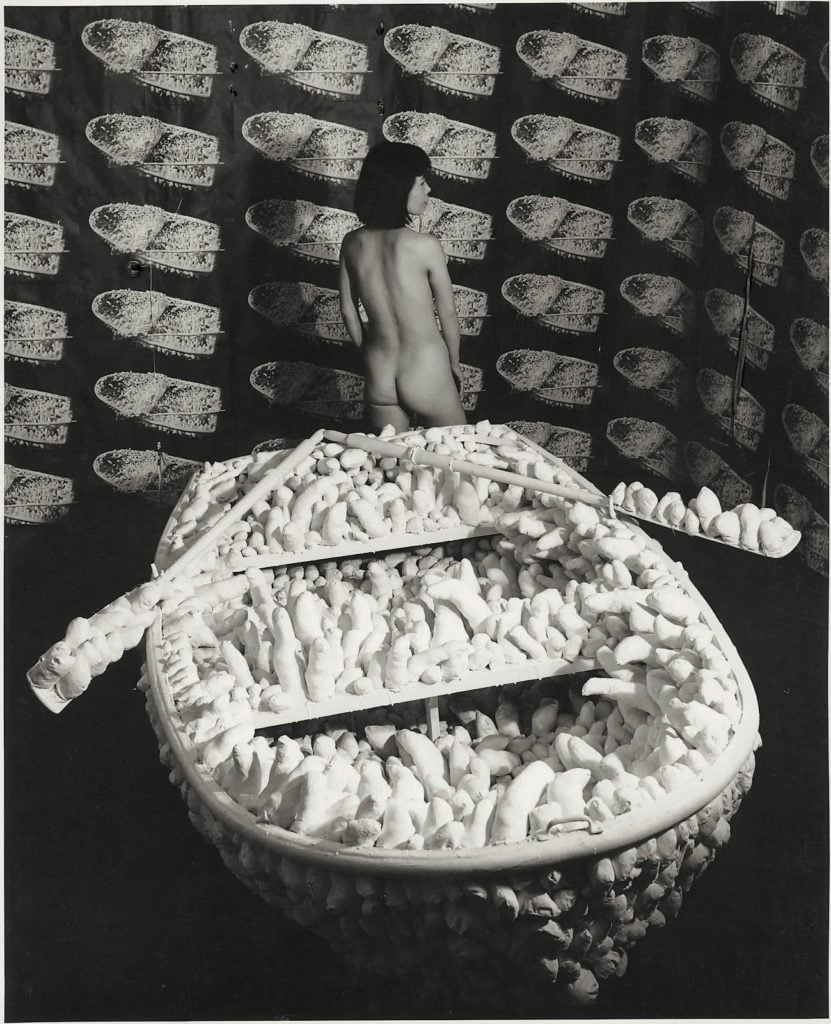
Yayoi Kusama posing with , New York. ©Yayoi Kusama and Yayoi Kusama Studios Inc.
At Kusama’s 1963 “Aggregation: One Thousand Boats Show” at New York’s Gertrude Stein Gallery, Warhol allegedly told her how impressed he was with the work, which covered the floor, walls, and ceiling with a repeated photograph of the exhibition’s only sculpture. Fast-forward three years later, and the Pop art legend installed Cow wallpaper at Leo Castelli. “Andy picked up what I did and copied it for a show!” Kusama said.
Most egregious of all was Lucas Samaras, who introduced a totally new direction in his work with the walk-in mirrored installation Room No. 2, at New York’s Pace Gallery in 1966. Kusama, of course, had created the art world’s first-ever room-like mirrored environment, Peep Show or Endless Love Show, just months before at Castellane Gallery, also in New York.
This repeated pattern, with white male artists being recognized for work that seemed influenced by her own innovations, was incredibly upsetting for Kusama. The film credits these episodes with helping trigger her depression and influencing her decision to return to Japan.

Letters between Georgia O’Keeffe and Yayoi Kusama from 1955. Photo courtesy of Yayoi Kusama Studio Inc.
As a young painter in Japan, Kusama came across the work of Georgia O’Keeffe and was transfixed. She wrote to the older artist, sending some of her paintings, and asking for advice. “I’m only on the first step on the long and difficult life of being a painter,” Kusama wrote. “Will you kindly show me the way?”
O’Keeffe responded, and, from her remote perch in the New Mexican desert, tried to make introductions for Kusama after the young artist moved to New York. The two even met once, and Kusama credits O’Keeffe with giving her the courage to leave Japan.
Today, the two artists hold two important records: O’Keeffe is responsible for the most expensive work by a women artist ever sold at auction—the 2014 sale of Jimson Weed/White Flower No. 1 for $44.4 million at Sotheby’s New York—while Kusama reigns supreme among all women artists for total sales at auction in 2018, with $64.2 million to date this year alone. (Kusama’s blockbuster exhibitions, of course, make her the world’s most successful artist by museum attendance.)
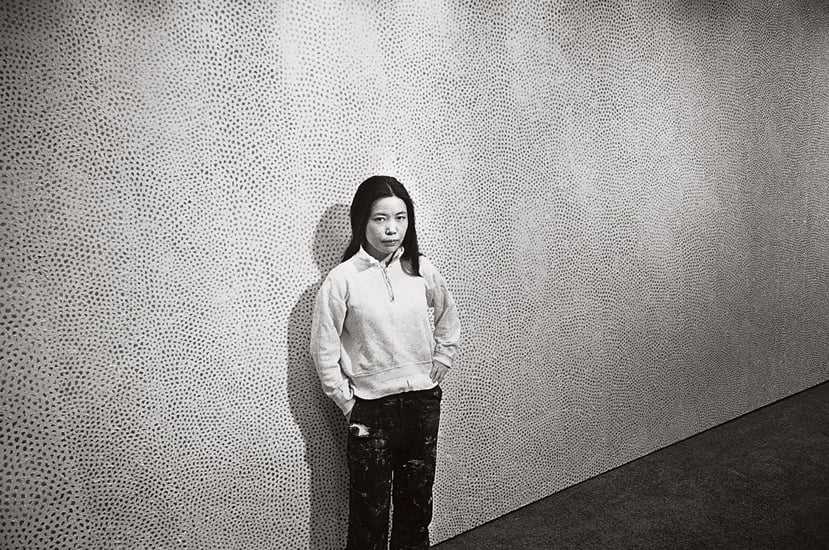
Yayoi Kusama with an Infinity Net painting at Stephen Radich Gallery, New York, in 1961. Frank Stella bought a work from the show on installment. Photo courtesy of Yayoi Kusama Studio Inc.
Frank Stella was among those captivated by Kusama’s beguiling “Infinity Net” paintings at her 1961 exhibition at New York’s Stephen Radich Gallery. He fell in love with her Yellow Net canvas and returned to the exhibition to buy it, despite concerns about the cost—$75, paid in installments. A post-credit note in the film reveals that Stella ultimately sold the work for $750,000—quite the return on investment!
See the film’s trailer below.